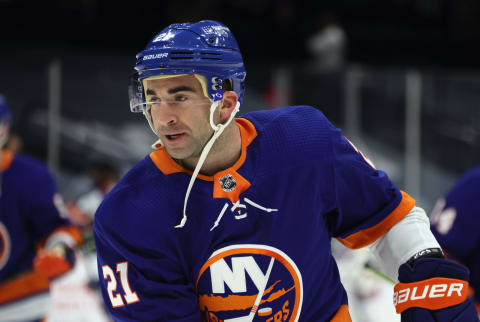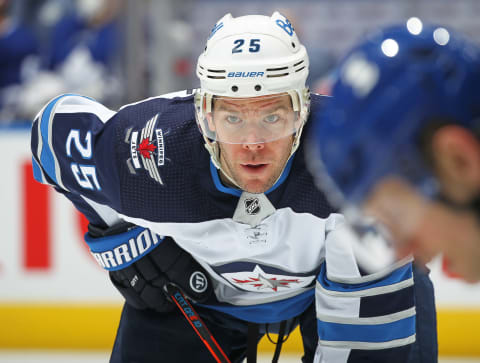Islanders: Looking at success rate of big trade deadline acquisitions


The two acquisitions made by the New York Islanders aren’t having the immediate impact fans thought they would, is that normal?
The New York Islanders made a big splash at the 2021 NHL trade deadline for the second year in a row. This year they sent a first in 2021, two ‘prospects’, and a conditional fourth-round pick in 2022 to get Kyle Palmieri and Travis Zajac from the New Jersey Devils.
It was a big trade that should have made the Isles into one of the top teams in the NHL. The acquisition after all gave the Isles exactly what they were missing. A top-six winger who can score 25+ goals in a year and a depth forward who was on pace for a 40+ point season.
But both Palmieri and Zajac have combined for four points in eleven games since the trade deadline. Zajac has even been a healthy scratch twice so far.
It has Islanders fans asking: “was it worth it?” I still maintain that it was and there’s still time for the two to be the impact players fans would have hoped they could be.
But with that in mind, I wanted to look back at other big acquisitions made at the trade deadline over the last five trade deadlines. How did they do for their new clubs after being acquired? Is what’s going on with Palmieri and Zajac rare or a common occurrence?
By “big acquisitions” I’m talking about players that returned a first-round pick for the team trading them away. And by “trade deadline” I don’t just mean the day itself but the few days leading up to it. Because as we know not everything happens on the actual day itself.

The 2020 Trade Deadline
There were a ton of first-round picks traded away at the last trade deadline. Here are all the players that were moved (and to what team) as well as their stats in the regular season and post-season (format is regular-season Goals-Assists-Points (GP)// playoff Goals-Assists-Points (GP)):
- Jean-Gabriel Pageau (to Islanders): 2-0-2 (7)// 8-3-11 (22)
- Brady Skjei (to Hurricanes): 0-1-1 (7) // 0-2-2 (8)
- Barclay Goodrow (to Lightning): 0-2-2 (8)// 1-5-6 (25)*
- Ondrej Kase (to Bruins): 0-1-1 (6) // 0-4-4 (11)
- Blake Coleman (to Lightning): 0-1-1 (9) // 5-8-13 (25)*
- Jason Zucker (to Penguins): 6-6-12 (15) // 2-0-2 (4)
When you look at this class you see a number of guys who didn’t have much of an impact right off the start. The only player who put up the type of production (in the regular-season) worthy of that first-round pick it cost to get them was Jason Zucker.
I know Brady Skjei is a defenseman and as such his production shouldn’t be measured equally to forwards, but one point in seven games isn’t exactly great.
Even Jean-Gabriel Pageau struggled for the Islanders in his first few games with his new team. We all knew he played the type of game that could excel under Barry Trotz, but it wasn’t until the post-season that we saw that materialize on the score sheet.
The same goes for Blake Coleman. Picked up from the New Jersey Devils he didn’t have much of an impact in his first handful of games with the Lightning, registering just a single assist. But in the post-season, he took off with 13 points in 25 games.
He wasn’t the MVP, but Coleman gave the eventual Stanley Cup champs the depth needed to bring home a championship. It was a price worth paying.
Looking at last year’s deadline there’s proof that what’s going on with Palmieri and Zajac isn’t rare. At least not in very recent times.

The 2019 Trade Deadline
- Kevin Hayes (to Jets): 5-7-12 (20) // 2-1-3 (6)
- Brandon Montour (to Buffalo): 3-7-10 (20) // N/A
- Matt Duchene (to Columbus): 4-8-12 (23) // 5-5-10 (10)
With only three trades going on in terms of first-rounders being traded in and around the 2019 trade deadline there’s less to consider than in 2020. All three of the players hit the ground running in their new cities. The two forwards had almost identical production.
Matt Duchene in Columbus and Hayes in Winnipeg had twelve points in 20-ish games. That’s great. Obviously, the hope was high for both teams and their fan bases that these trades could put them in the running for a Stanley Cup.
Neither team reached their goal. Columbus at least made it past the opening round by eliminating the Tampa Bay Lightning (the presumed favorite) in four straight games. But they couldn’t get past the Bruins in the second round.
Duchene for his part was a big reason for that run. He was a point-per-game player for them with ten points in ten playoffs games.
The takeaway? We’ll have to see more, but it seems that maybe if players get a good portion of the season to acclimate to their new surroundings they can eventually make it work. Duchene for example only had three points in his first seven and two of those came in game number one.

The 2018 Trade Deadline
- Ryan McDonagh (to Lightning): 2-1-3 (14) // 0-5-5 (17)
- JT Miller (to Lightning): 10-8-18 (19) // 2-6-8 (17)
- Tomas Tatar (to Golden Knights): 4-2-6 (20) // 1-1-2 (8)
- Evander Kane (to Sharks): 9-5-14 (17) // 4-1-5 (9)
- Paul Stastny (to Jets): 4-9-13 (19) // 6-9-15 (17)
- Ryan Hartman (to Predators): 3-3-6 (19) // 2-1-3 (9)
- Rick Nash (to Bruins): 3-3-6 (11) // 3-2-5 (12)
- Derick Brassard (to Penguins): 3-5-8 (14) // 1-3-4 (12)
Maybe it’s just the pandemic? Look at all the forwards here who’ve done well for their teams in the regular-season post trade. There are only three guys who don’t have good numbers post-trade. Tatar, Nash, and Hartman. That’s it.
It’s probably not much of a coincidence that these three players combined for ten points across 29 playoff games that year.
Which kind of continues what we saw for the 2019 trade deadline. Both in 2018 and 2019 players got nearly 20 games to get used to their new clubs. Sure, none of them powered their teams to a Stanley Cup, but they certainly tried.
Stastny had the greatest impact with 15 points across 17 playoff games with the Winnipeg Jets. This shows when a player fits the role he’s being brought in to play things can work out pretty well.
And that’s the worry with Kyle Palmieri. This is probably an oversimplification, but his ice time has gone way down since joining the Islanders. He’s averaging 14:39 under Trotz while he was getting 17:47 on average with the Devils.
Palmieri was seemingly brought in to play in the top six, but at the moment he’s playing on the third line. That’s probably why he’s not performing very well at the moment.

The 2016 and 2017 Trade Deadlines
- Kevin Shattenkirk (to Capitals): 2-12-14 (19) // 1-5-6 (13)
- Martin Hanzal (to Wild): 4-9-13 (20) // 1-0-1 (5)
- Andrew Ladd (to Blackhawks): 8-4-12 (19) // 1-1-2 (7)
Martin Hanzal has to be the largest cautionary tale for trading a first-round pick at the deadline. Not only because the 6’6″ is a very large man, but because of what he didn’t do for the Wild that year in the playoffs, and that was score goals.
Hanzal had one goal in the post-season as the Wild fell in five games to the St Louis Blues.
And boy should Garth have seen what was coming with Ladd’s performance in the playoffs. Clearly, all the former Islanders GM saw was eight goals and 12 points in 19 games down the stretch.
Overall Thoughts?
This pandemic and the shortened season is certainly not helping things. Palmieri and Zajac would do well to have up to 20 games with the Isles before going into the playoffs. But from what the other deadline acquisitions have shown you typically know what you’re going to get by now.
This does not bode too well for the Islanders as they down the final stretch of games and into the opening round of the playoffs. From everything I see here with all these trade deadline acquisitions, it seems we’d know if Palmieri and Zajac are going to be impact players. And so far, they don’t look like they will be.
Hopefully, that changes.